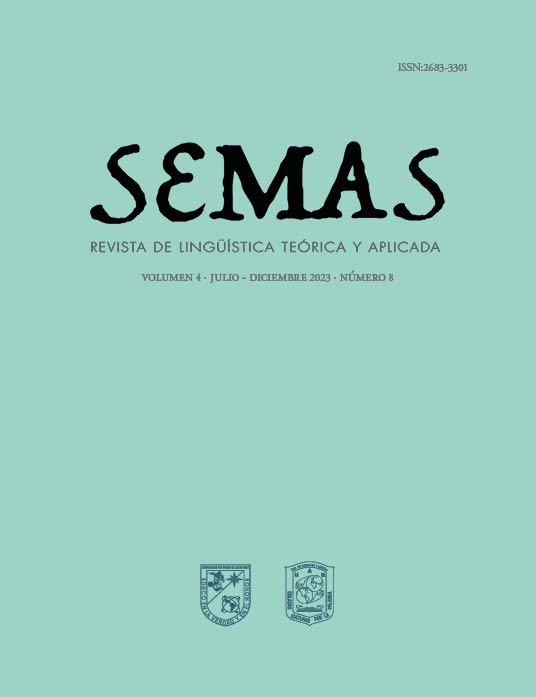Abstract
This paper addresses the acoustic analysis of the voiceless postalveolar affricate in the northern part of the state of Sinaloa. The duration characteristics of the phoneme are described, both for the occlusion period and for the friction period, and the total length is presented in the productions of both men and women in the region. The data are compared with the work of Herrera (2006) on the weakening of postalveolar voiceless affricate in two varieties of American Spanish, Panamanian and Mexican. From this comparison, it is found that the duration of the total segment in Sinaloa is longer, and the phenomenon of weakening reported by the author in the varieties she studied does not. Rather, the period of occlusion in the phoneme produced by the Sinaloan people is much longer, as is the period of friction, which is greater in the case of women.
References
Almeida, M. (1997). “Organización temporal del español: el principio de isocronía”. Revista de filología románica, núm. 14, vol. 1, 29-40.
Boersma, P. y Weenink, D. (2021). Praat: doing phonetics by computer [Computer program]. Version 6.2.09. http://www.praat.org
Brown, D. (1989). “El habla juvenil de Sonora, México: la fonética de 32 jóvenes”. Nueva Revista de Filología Hispánica, 37(1), pp. 43-82.
Casillas, J. (2012). “La fricativización del africado ʈʃ en el habla de las mujeres del sur de Arizona”. Divergencias. Revista de estudios lingüísticos y literarios, 10(1) pp. 56-70.
Cedergren, H. (1973). Interplay of social and linguistic factors in Panama (Tesis doctoral). Ithaca: Cornell University.
Herrera Zendejas, E. (2006). “El debilitamiento de ʈʃ en dos variedades del español americano”. Nueva Revista de Filología Hispánica, 54 (2), pp. 557-569.
Jaramillo, J. y Bills, G. (1982). “The phoneme /ch/ in the Spanish of Tomé, New Mexico”. En F. Barkin, E.A. Brandt & J. Ornstein-Galicia (Eds.). Bilingualism and language contact: Spanish, English, and Native American Languages. New York: Teachers College Press.
Martín Butragueño, P. (2009). Regularidad y excepcionalidad del cambio lingüístico: el caso de ʈʃ en la geografía fónica de México. Ciudad de México: El Colegio de México.
Martínez Celdrán, E. (2007). Análisis espectrográfico de los sonidos del habla. Barcelona, España: Ariel.
Martínez Celdrán, E. y Fernández Planas, A. (2007). Manual de fonética española. Articulaciones y sonidos del español. Barcelona, España: Ariel.
Moreno de Alba, J. G. (1994). La pronunciación del español en México. Ciudad de México: Colegio de México, Centro de Estudios Lingüísticos y Literarios.
Serrano, J. (2000). “Contacto dialectal (¿y cambio lingüístico?) en español: el caso de la ʈʃ sonorense”. En P. Martín Butragueño (Ed.) Estructuras en contexto: estudios de variación lingüística (pp. 45-59). México: El Colegio de México.
Valdés, G. (2001). “Heritage language students: Profiles and possibilities”. En J. Peyton, D. Renard, & S. McGinnis (Eds.), Heritage language in America: Preserving a national resource (pp. 37-80). McHenry: Center for Applied Linguistics and Delta Systems.

This work is licensed under a Creative Commons Attribution 4.0 International License.
Copyright (c) 2023 Semas

